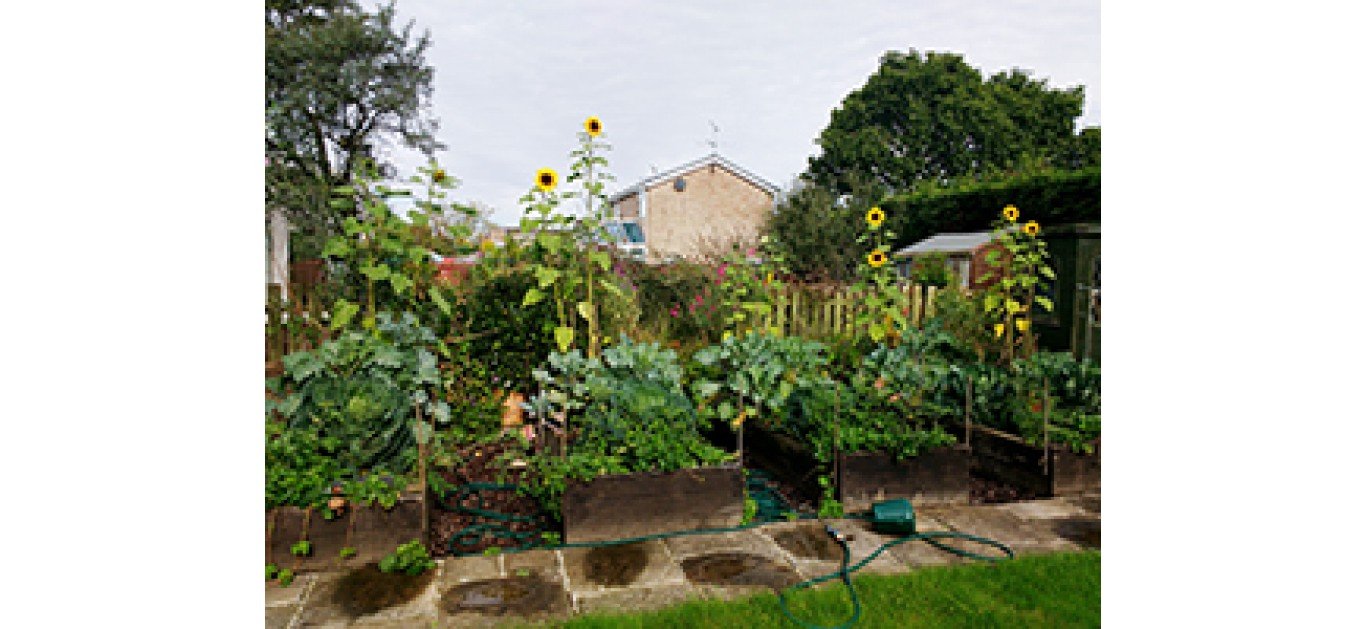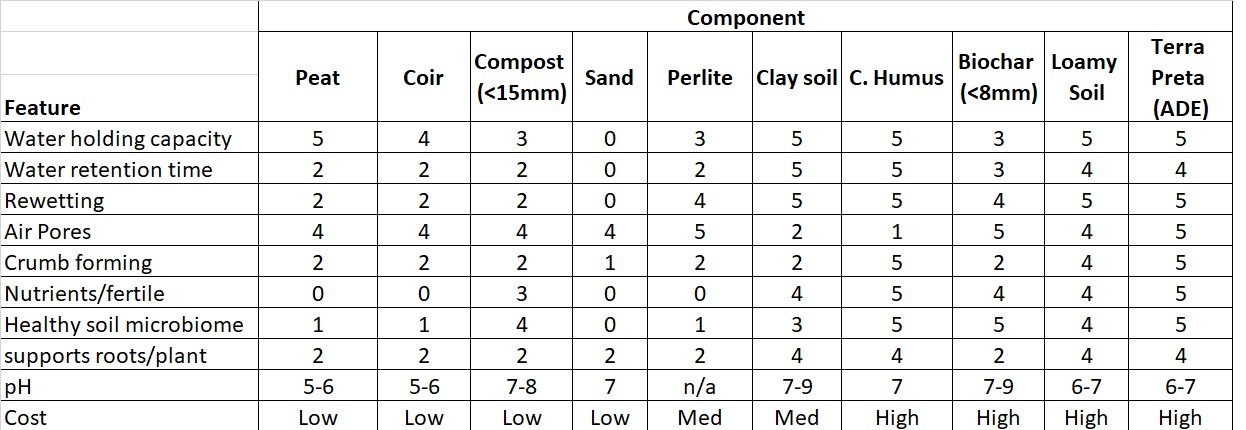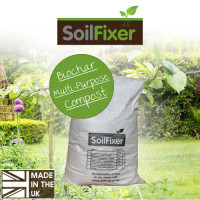What is the best raised bed & container mix?

Creating the perfect raised bed growing media (soil, mixture, planting soil)
Post updated March 2023 to include the latest information on SF40 - biochar multi-purpose compost.
We could cut straight to it: use SoilFixer's new SF40 - Biochar Multi-purpose Compost, however, we pride ourselves on investigating and offering impartial advice.
Our the years, we looked at numerous websites and found a whole range of recipes for raised bed mixes (i.e. mixes for planting, and growing - not soil improver composts). Some tests use controls and all the reports we have read have mixed results or can be contested. We did our own tests back in 2016 and our SF40 formulation
When you look at all the different plants there is no perfect raised bed mix for everything. Start with a good all-around blend and then tweak where needed. For example tomatoes versus brassicas, potatoes versus shrubs, and flowers versus a tree. Each plant prefers different watering regimes, nutrients, and soil conditions. Are you growing from seed or potting on? Annuals or trees with a 15-year lifespan. Chalky soil will grow different things from clayey soil. Nature has a million different plants that grow in many soil types.
With this in mind, let's look at what goes into creating a fertile loamy mix that will grow many (most) things well.
Top 6 features we want in a good raised bed growing mixture (i.e. soil or growing media)
- Good water holding capacity, but still drains rather than waterlogging
- Long water retention - does not dry out too quickly
- Has lots of air pores (roots need to 'breathe', i.e. respire)
- Good crumb structure (leading to aggregation and easy tilling, and planting)
- Fertile - readily available plant nutrients
- Healthy soil microbiome that supports plant growth
Which soil/growing media ingredients give you these items - see table:

Here's the thing: how well your raised bed mix works will depend on what you add. Each ingredient in the list is poorly defined and what you get can vary significantly. For example; compost varies massively from 'mostly fine wood chip', to virtually all colloidal humus. Manufactured 'All-purpose compost' has varying ingredients from wood fiber, peat, and coir (and some compost or no compost. Topsoil and sands vary. You will be hard-pressed to purchase a "rich loamy topsoil". There will be a balance of cost against performance.
From the table, can we advise what mixes might be poor - yes:
What not to use as your raised bed mixture
- 100% compost - even PAS100 compost. Compost is a poor growing media
- 100% peat (not just on environmental concerns, peat will dry out and require constant watering in summer)
- 100% biochar
- Clayey topsoil (even if BSI graded)
Examples of raised bed mix which will be good for most plants:
- SoilFixer SF40 biochar compost (based on 2 parts PAS100 compost, 1 part biochar)
- A Terra Preta Top Soil mix (Amazonian Dark Earth topsoil): 50% clayey topsoil, 25% PAS100 compost(<15mm), 25% SF60 (biochar super compost, <10mm). Or you can now add SF40 50/50 with soil.
- 70/30 mix of BSI graded topsoil with PAS100 compost (<15mm)
- 75 /25 clayey topsoil with 25% SF60 (biochar super compost)
- All-purpose composts (they are not composts, they are growing media - they will need lots of watering!)
- John Innes No 1 "compost" mixes (not compost, but blended mix)
- A true high-quality BSI graded "loamy soil" (a rare thing to find!)
- 55% compost, 25% clayey topsoil, 25% sand
According to:
Journey with Jill, she found the 50% Topsoil, 25% compost, 25% other organic matter best
Gardening Love to Know, favour a 50:50 mix of compost and local topsoil, preferably cultivated from your own yard. Pre-mixed soil blends won't have enough nutrients.
The Which? Gardening magazine trial of the best soil mix for raised beds found that a mixture of 25% topsoil, 50% composted manure, and 25% sand and grit was best. They commented that although the mix was quite heavy to put in the bed, it didn’t settle much and was very easy to dig. It was easy to weed by hand, soil fertility was good, and they got the best yield of potatoes and carrots. The amount of moisture in the mix was well balanced, and it also had the warmest soil temperature – on average, 1.5°C warmer than the ground temperature in the early part of the year. A mixture of 50% topsoil and 50% multipurpose compost was worth considering, but topsoil on its own was a disaster; it was cold, wet and heavy during the spring and lacked fertility, leading to a poor yield of potatoes and carrots.





